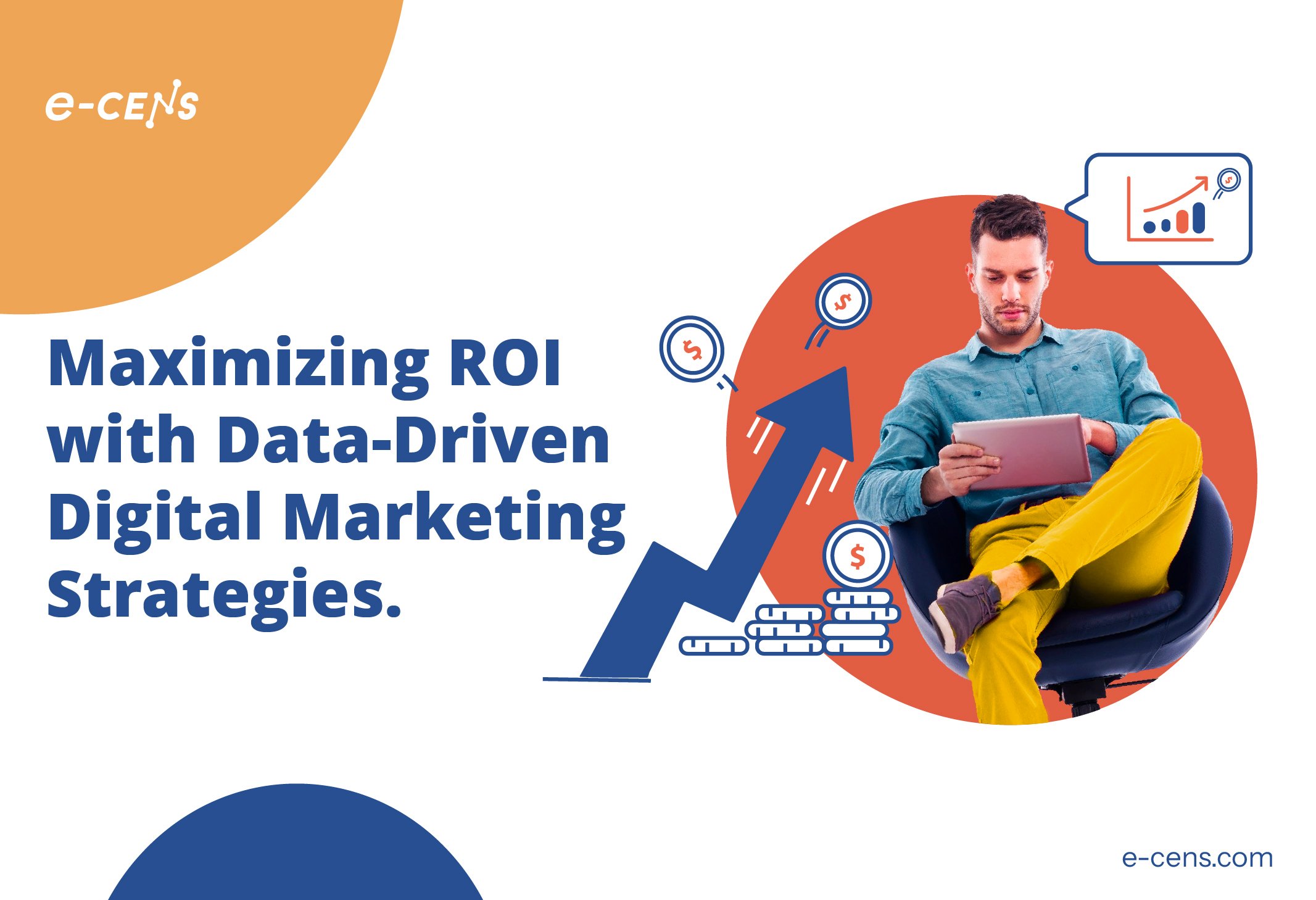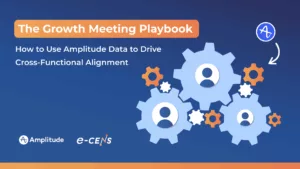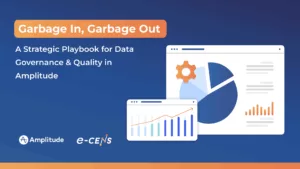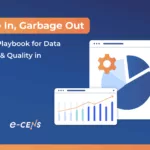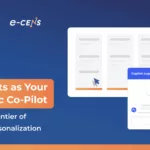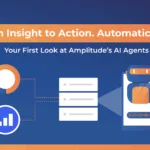Importance of Measuring Marketing ROI
- Measuring and optimizing marketing ROI is crucial for demonstrating value in digital marketing efforts.
Challenges in Measuring Marketing ROI
- Multi-Touch Attribution: Difficulty in attributing conversions across various touchpoints.
- Data Silos: Fragmented data across platforms hinders analysis.
- Tracking Offline Conversions: Challenges in linking digital efforts to offline sales.
- Long Sales Cycles: Difficulty in connecting marketing activities to long-term conversions.
- Measuring Brand Impact: Hard to quantify the ROI of brand awareness campaigns.
- Data Quality: Ensuring data accuracy is essential.
- Lack of Analytical Skills: Many teams lack the required analytics capabilities.
Benefits of Data-Driven Marketing
- Precision Targeting: Tailored messaging for the right audience.
- Increased Efficiency: Better budget allocation to high-performing channels.
- Enhanced Customer Experiences: Personalized content delivery.
- Measurable ROI: Effective tracking of marketing impact.
Key Components of a Data-Driven Strategy
- Data collection and management from relevant sources.
- Transforming data into actionable insights through analytics.
- Creating specific customer segments.
- Crafting personalized marketing messages.
- Providing seamless omnichannel experiences.
- Continuously optimizing campaign performance.
Operational vs. Environmental Drivers
- Operational Drivers: Factors marketers can control (e.g., budget, targeting).
- Environmental Drivers: External factors influencing marketing effectiveness (e.g., competitors, consumer behavior).
Building a Robust Data-Driven Marketing Strategy
- Establish clear goals and KPIs.
- Identify relevant data sources and integrate them.
- Clean and enrich data for accuracy.
- Develop analytical capabilities within the team.
- Create comprehensive reporting systems.
- Foster a data-driven culture.
Optimization Strategies
- Implement multi-touch attribution.
- Focus on customer lifetime value (CLV).
- Refine customer segmentation for personalization.
- Optimize marketing funnels through conversion rate optimization (CRO).
- Allocate budgets based on data insights.
Importance of Expertise
Partnering with experts can enhance the implementation of data-driven strategies and optimize campaign effectiveness.
Real-World Success Stories
Companies like Netflix, Amazon, and Starbucks demonstrate significant improvements in engagement and revenue through data-driven strategies.
Actionable Steps
To start:
- Audit current data practices.
- Define measurable goals and KPIs.
- Invest in analytics tools.
- Centralize data for a unified view.
Data-driven marketing enables targeted campaigns that deliver measurable ROI, improve customer loyalty, and optimize resource allocation, requiring a culture of continuous learning and adaptation.
Measuring and optimizing marketing ROI has become more critical than ever. As businesses invest heavily in digital marketing efforts, the ability to quantify returns and demonstrate value is paramount.
However, the complex, multi-channel nature of modern marketing presents significant challenges in accurately tracking and attributing results.
This is where data and analytics play a crucial role. By leveraging the vast amounts of data available from various digital touchpoints, marketers can gain deeper insights into customer behavior, campaign performance, and overall marketing effectiveness.
This leads to several key benefits:
- Precision targeting: Reach the right audience with tailored messaging
- Increased efficiency: Allocate budget and resources to top-performing channels and tactics
- Enhanced customer experiences: Deliver relevant, personalized content across touchpoints
- Measurable ROI: Track and quantify the impact of marketing efforts
In this comprehensive guide, we’ll explore how marketers can harness the power of data to overcome common challenges and drive better returns on their digital marketing investments.
We’ll cover key strategies for collecting and analyzing relevant data, identifying critical return on investment drivers, implementing data-driven tactics across channels, and preparing for the future of AI-powered marketing.
By embracing a data-centric mindset and leveraging the right tools and techniques, marketers can move beyond guesswork and intuition to make truly informed decisions that boost performance and demonstrate clear value to the business.
Let’s dive in and discover how to maximize your ROI through data-driven digital marketing strategies.
The Challenges of Measuring Marketing ROI
While the importance of measuring marketing ROI is clear, actually doing so in practice presents several significant challenges:
Multi-Touch Attribution
One of the biggest hurdles is accurately attributing conversions and revenue across multiple marketing touchpoints. In today’s omnichannel world, customers typically interact with a brand through various channels and campaigns before converting.
Determining which touchpoints played the most important role in driving the final conversion is complex.
For example, a customer may first discover a product through a paid social ad, later see a retargeting display ad, then visit the website directly, and finally convert after receiving an email promotion. Giving proper credit to each of these touchpoints is crucial for understanding true campaign performance and ROI.
Simple “last-click” attribution models fail to account for the full customer journey. More sophisticated multi-touch attribution is needed, but implementing it effectively requires advanced tracking and analytics capabilities.
Data Silos and Integration Issues
Another major challenge is the fragmentation of marketing data across multiple platforms and tools.
Most companies use a variety of marketing technologies, each generating its own data – website analytics, CRM data, social media metrics, email performance stats, etc.
Integrating all of this disparate data into a unified view is difficult but necessary for accurate ROI measurement.
Data silos prevent marketers from seeing the full picture of campaign performance and customer journeys.
Tracking Offline Conversions
For businesses that drive both online and offline conversions, connecting digital marketing efforts to in-store sales or phone orders presents another layer of complexity. Without proper tracking systems in place, a significant portion of marketing-driven revenue may go unattributed.
Long Sales Cycles
In B2B and considered purchase scenarios with lengthy sales cycles, tying marketing activities to eventual conversions that may happen months later is challenging. This requires sophisticated lead tracking and closed-loop reporting between marketing and sales teams.
Measuring Brand Impact
Not all marketing activities are designed to drive immediate conversions. Brand awareness campaigns, for instance, may have significant long-term value but are difficult to quantify in terms of direct ROI.
Marketers need ways to measure lift in brand metrics and connect them to business outcomes.
Data Quality and Accuracy
Even when data can be collected and integrated, ensuring its accuracy and reliability is an ongoing challenge. Issues like bot traffic, duplicate leads, and improper tracking implementation can skew results if not carefully monitored and cleaned.
Lack of Analytical Skills
Many marketing teams lack the deep analytical capabilities required to properly collect, process, and derive insights from large datasets. This skills gap can hinder efforts to implement truly data-driven strategies.
Overcoming these challenges requires a combination of the right technology, processes, and skills. In the following sections, we’ll explore how marketers can leverage data and analytics to address these hurdles and drive improved ROI measurement and optimization.
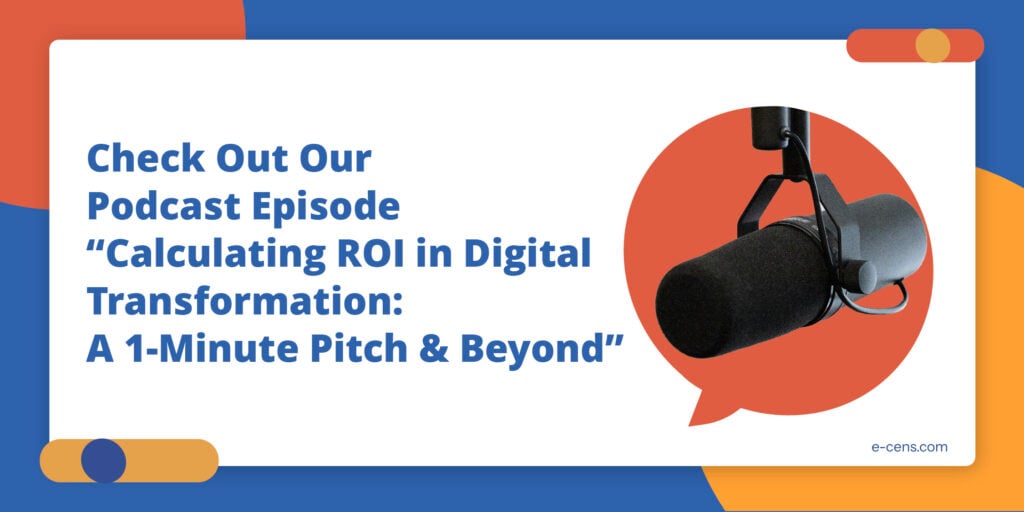
Data as the Guiding Light: Identifying Key ROI Drivers
To maximize ROI on marketing spend, it’s crucial to understand the key drivers that impact performance.
Data and analytics play a transformative role in uncovering these drivers and gaining actionable insights. Let’s explore how marketers can leverage data to identify and optimize both operational and environmental ROI drivers.
Key Components of Data-Driven Marketing
Implementing an effective data-driven marketing strategy requires several core components working in harmony:
Data Collection and Management
The foundation of any data-driven approach is having access to high-quality, relevant data about your customers, prospects, and marketing performance.
Key data sources may include:
- Customer relationship management (CRM) systems
- Website analytics
- Social media insights
- Email marketing metrics
- Advertising platform data
- Sales and transaction data
- Third-party demographic and behavioral data
It’s critical to have systems in place to collect, integrate, and manage data from multiple sources. This may involve implementing a customer data platform (CDP) or data management platform (DMP) to create a unified view of customers across touchpoints.
Data quality and governance are also essential considerations. Marketers need to ensure data is accurate, up-to-date, and compliant with privacy regulations like GDPR and CCPA.
Analytics and Insights
Raw data alone doesn’t drive results – it needs to be analyzed and transformed into actionable insights. This requires robust analytics capabilities, including:
- Descriptive analytics to understand what happened
- Diagnostic analytics to determine why it happened
- Predictive analytics to forecast future outcomes
- Prescriptive analytics to recommend optimal actions
Advanced analytics techniques like machine learning and artificial intelligence can uncover hidden patterns and correlations in large datasets. Data visualization tools help make insights accessible and easy to interpret for marketers and stakeholders.
Customer Segmentation
A key benefit of data-driven marketing is the ability to move beyond broad demographic segments to create highly specific audience segments based on behaviors, preferences, and other attributes. This allows for much more targeted and relevant marketing.
Effective segmentation may consider factors like:
- Demographics (age, gender, location, income, etc.)
- Psychographics (interests, values, lifestyle)
- Purchase history and product preferences
- Engagement levels and channel preferences
- Customer lifetime value
- Stage in the customer journey
The goal is to group customers with similar characteristics and needs so marketing efforts can be tailored accordingly.
Personalized Marketing Messages
Once customer segments are defined, marketers can craft personalized messaging and offers for each group. This goes beyond simply inserting a customer’s name into an email – true personalization means delivering relevant content, product recommendations, and offers based on individual preferences and behaviors.
Personalization can be applied across channels, including:
- Website content and product recommendations
- Email marketing campaigns
- Digital advertising
- Social media content
- Mobile app experiences
Dynamic content and real-time personalization allow marketers to serve up the most relevant messaging based on a customer’s current context and behavior.
Omnichannel Marketing
Today’s consumers expect seamless experiences as they move between devices and channels. Data-driven marketing enables true omnichannel orchestration by providing a unified view of the customer across touchpoints.
This allows marketers to deliver consistent, personalized experiences whether a customer is browsing the website, opening an email, scrolling social media, or visiting a physical store. Cross-channel data can also reveal insights about the customer journey to inform marketing strategy.
Continuous Optimization
One of the biggest advantages of data-driven marketing is the ability to continually test, measure, and optimize campaign performance.
By closely tracking KPIs and leveraging A/B testing, marketers can identify what’s working and double down on top-performing tactics.
This creates a virtuous cycle of continuous improvement, with each campaign and interaction generating new data and insights to inform future efforts.
The Power of Data-Driven Insights
Data analytics enables marketers to move beyond gut feelings and assumptions to make truly informed decisions.
By analyzing large datasets from multiple sources, patterns and correlations emerge that may not be apparent on the surface. This allows for:
- More precise audience targeting and segmentation
- Optimization of channel mix and budget allocation
- Personalization of messaging and content
- Identification of high-value customer segments
- Early detection of trends and market shifts
With the right data and analysis, marketers can gain a much deeper understanding of what’s working, what’s not, and where the biggest opportunities lie for improving ROI.
Now that we have identified the key components of ROI, let’s dive into the drivers that are in action shaping how marketers maximize their ROI.
Categorizing ROI Drivers
ROI drivers can generally be grouped into two main categories:
- Operational Drivers – Factors that marketers can directly control and optimize
- Environmental Drivers – External factors that impact performance but can’t be directly controlled
Let’s explore each of these categories in more depth:
Operational Drivers
These are the levers that marketers can pull to directly influence campaign performance and ROI. Key operational drivers include:
Strategic Budget Allocation and Media Planning
Data analysis allows marketers to identify which channels, campaigns, and tactics are driving the best returns.
This enables more strategic allocation of budgets to maximize ROI.
For example, analysis may reveal that certain audience segments or geographic regions are significantly outperforming others. Budget can then be shifted to double down on these high-performing areas.
Marketers should leverage historical data and industry benchmarks to optimize budget allocation across channels. It’s important to find the right balance – underspending can limit opportunities, while overspending can lead to diminishing returns.
Optimizing Channel Mix
Related to budget allocation is optimizing the overall marketing channel mix. Data can reveal which channels are most effective for different goals and stages of the customer journey.
For instance, analysis may show that paid search is highly effective for bottom-of-funnel conversions, while content marketing and social media perform better for top-of-funnel awareness. The channel mix can then be adjusted accordingly.
It’s critical to measure and attribute ROI at a granular level to determine which channels provide the best value for each market segment, product line, or campaign objective.
Precise Audience Targeting and Segmentation
One of the most powerful ways data can drive ROI is through improved audience targeting. By analyzing customer data, marketers can create more precise audience segments based on demographics, behaviors, interests, and other attributes.
This allows for highly targeted campaigns that resonate with specific audience segments, improving relevance and conversion rates. Marketers can also identify their highest-value customer segments and focus more resources on acquiring and retaining those customers.
Creative Messaging and Content Personalization
Data insights enable marketers to craft more compelling and personalized messaging. By understanding customer preferences, pain points, and behaviors, content can be tailored to resonate with specific audience segments.
A/B testing and multivariate testing allow marketers to optimize creative elements like ad copy, images, and calls-to-action. Machine learning algorithms can even dynamically personalize content in real-time based on user attributes and behaviors.
Environmental Drivers
While not directly controllable, these external factors have a significant impact on marketing performance and ROI. Savvy marketers use data to monitor and adapt to changes in environmental drivers:
Competitor Activities and Industry Trends
Keeping a close eye on competitor strategies and broader industry trends is crucial. Data from competitive intelligence tools, social listening, and market research can reveal emerging opportunities or threats.
For example, analysis of competitor ad spend and messaging may uncover gaps in the market that can be exploited. Or it may reveal successful tactics that can be adapted for your own campaigns.
Consumer Preferences and Behaviors
Customer preferences and behaviors are constantly evolving. Ongoing analysis of customer data, surveys, and market research is essential to stay aligned with target audiences.
This could involve tracking changes in media consumption habits, device usage, purchase behaviors, or brand perceptions. Marketers must be ready to pivot strategies as needed based on shifting consumer trends.
Economic Shifts
Broader economic conditions can have major impacts on marketing performance. During economic downturns, for instance, consumer spending patterns may change dramatically.
Data analysis can help marketers identify early warning signs of economic shifts and adjust strategies proactively. This may involve reallocating budgets, adjusting messaging, or focusing on different product lines or audience segments.
Technological Advancements
The rapid pace of technological change creates both opportunities and challenges for marketers. New platforms, ad formats, and targeting capabilities are constantly emerging.
Staying on top of these developments and understanding their potential impact on ROI is crucial. Early adoption of promising new technologies can provide a competitive advantage.
Industry Partnerships and Collaborations
Strategic partnerships can be a powerful driver of marketing ROI. Data analysis can help identify the most valuable partnership opportunities and measure their impact.
This could involve co-marketing initiatives, channel partnerships, influencer collaborations, or other forms of strategic alliances. Tracking the performance of these partnerships is key to optimizing their value.
By leveraging data to understand and optimize both operational and environmental ROI drivers, marketers can significantly improve the effectiveness and efficiency of their efforts.
In the next section, we’ll explore how to build a robust data-driven marketing strategy to put these insights into action.

Building a Robust Data-Driven Marketing Strategy
Developing a data-driven marketing strategy requires a systematic approach to collecting, analyzing, and activating data insights. Here’s a step-by-step guide to building a robust data-driven marketing strategy:
1. Establish Clear Goals and KPIs
The first step is to define clear, measurable goals for your marketing efforts. These should align with broader business objectives and be specific, time-bound, and quantifiable.
Common marketing KPIs include:
- Customer acquisition cost (CAC)
- Customer lifetime value (CLV)
- Conversion rates
- Return on ad spend (ROAS)
- Brand awareness metrics
- Market share
It’s important to establish both short-term and long-term goals, as some marketing initiatives may take time to show results.
2. Identify Relevant Data Sources
Once goals are established, determine what data you’ll need to measure progress and gain insights.
Relevant data sources may include:
- Website analytics
- CRM data
- Social media metrics
- Email marketing performance
- Paid advertising platforms
- Customer surveys and feedback
- Sales data
- Industry and competitive intelligence
Ensure you have proper tracking and data collection mechanisms in place for each source.
3. Integrate Data from Multiple Platforms
To get a holistic view of marketing performance, it’s crucial to integrate data from various sources. This often requires implementing a customer data platform (CDP) or data warehouse solution.
Key considerations for data integration include:
- Ensuring data quality and consistency across sources
- Establishing a single customer view by unifying data around individual profiles
- Implementing proper data governance and security measures
- Automating data collection and integration processes where possible
4. Implement Data Cleaning and Enrichment
Raw data is often messy and incomplete. Implement processes for cleaning and enriching your data to ensure accuracy and usefulness:
- Remove duplicate entries and correct errors
- Standardize data formats and naming conventions
- Append missing information from third-party sources
- Validate data accuracy through cross-referencing and quality checks
5. Develop Analytical Capabilities
To derive meaningful insights from your data, you’ll need strong analytical capabilities.
This may involve:
- Building an in-house data science team
- Partnering with analytics consultants or agencies
- Implementing advanced analytics and machine learning tools
- Providing data literacy training for marketing team members
The goal is to move beyond basic descriptive analytics to more advanced predictive and prescriptive analytics that can guide decision-making.
6. Create Comprehensive Reporting and Dashboards
Develop reporting systems and dashboards that provide easy access to key metrics and insights.
These should:
- Offer real-time or near-real-time data updates
- Allow for drill-down into granular details
- Provide visualizations that make data easy to understand
- Be customizable for different stakeholders and use cases
Ensure that reporting is accessible to all relevant team members and stakeholders to foster a data-driven culture.
7. Establish a Testing and Optimization Framework
Implement a systematic approach to testing and optimizing marketing initiatives based on data insights. This should include:
- A/B and multivariate testing protocols
- Clear hypothesis formulation and success criteria
- Rigorous statistical analysis of test results
- Processes for rapidly implementing winning variants
8. Develop a Data-Driven Culture
Building a truly data-driven marketing organization requires more than just tools and processes. It requires fostering a culture where data-informed decision-making is the norm. This involves:
- Leadership buy-in and advocacy for data-driven approaches
- Rewarding and recognizing data-driven successes
- Encouraging curiosity and questioning of assumptions
- Providing ongoing training and resources for data skills development
9. Ensure Compliance and Ethical Data Use
As you build your data-driven strategy, it’s crucial to prioritize data privacy and compliance. This includes:
- Adhering to regulations like GDPR, CCPA, and other applicable laws
- Implementing robust data security measures
- Being transparent with customers about data collection and use
- Obtaining proper consent for data collection and processing
- Using data ethically and responsibly
10. Continuously Evolve and Adapt
Finally, remember that building a data-driven marketing strategy is an ongoing process. Continuously reassess and refine your approach based on new technologies, changing market conditions, and emerging best practices.
By following these steps, you can create a strong foundation for data-driven marketing that drives improved ROI and business results. In the next section, we’ll explore specific tactics for optimizing ROI through data-driven approaches.
Long-Term Strategies for Implementing Data-Driven Marketing
With the core components in place, here are key strategies for leveraging data to maximize marketing ROI:
Implement Multi-Touch Attribution to Understand Marketing Impact
Understanding which marketing touchpoints and channels are driving conversions is critical for optimizing ROI. Multi-touch attribution models provide a more holistic view of the customer journey compared to simplistic last-click models.
Key steps for implementing multi-touch attribution:
- Use advanced tracking tools: Implement tracking pixels, UTM parameters, and cross-device tracking to capture touchpoint data.
- Choose the right attribution model: Options include linear, time decay, position-based, and data-driven models. Select the model that best aligns with your business and customer journey.
- Integrate data sources: Combine data from ad platforms, web analytics, CRM systems, and other sources for a complete picture.
- Analyze attribution data: Identify which channels and campaigns are driving conversions at different stages of the funnel.
- Optimize budget allocation: Shift spend to top-performing channels and tactics based on attribution insights.
- Refine messaging and creatives: Use attribution data to understand which messages resonate at different touchpoints.
- Continuously update: Regularly refresh attribution models as customer behavior evolves.
By implementing multi-touch attribution, marketers can more accurately measure ROI across channels and optimize their marketing mix accordingly.
Focus on Customer Lifetime Value (CLV)
While short-term metrics like cost per acquisition are important, optimizing for customer lifetime value leads to better long-term ROI. CLV takes into account the total revenue a customer is expected to generate over their entire relationship with a company.
Strategies for leveraging CLV in marketing:
- Calculate CLV: Use historical purchase data and predictive analytics to estimate future CLV for different customer segments.
- Identify high-value segments: Focus acquisition efforts on customer segments with the highest potential CLV.
- Personalize retention efforts: Tailor loyalty programs and retention campaigns based on a customer’s CLV and preferences.
- Optimize acquisition spend: Adjust customer acquisition cost targets based on expected CLV for different segments.
- Predict churn risk: Use predictive analytics to identify customers at risk of churning and take proactive retention measures.
- Upsell and cross-sell: Target high-CLV customers with relevant upsell and cross-sell offers to maximize lifetime revenue.
- Measure marketing impact on CLV: Track how marketing initiatives influence long-term customer value, not just short-term conversions.
By orienting marketing strategy around CLV, businesses can make smarter investments in customer acquisition and retention to drive sustainable growth.
Refine Customer Segmentation for Personalization
Generic, one-size-fits-all marketing rarely delivers optimal ROI. Refining customer segmentation allows for more targeted, relevant marketing that resonates with specific audience groups.
Best practices for data-driven segmentation:
- Leverage multiple data sources: Combine first-party customer data with third-party data for richer segmentation.
- Use advanced analytics: Apply clustering algorithms and machine learning to identify meaningful segments.
- Consider behavioral data: Go beyond basic demographics to segment based on interests, purchase patterns, and engagement levels.
- Create buyer personas: Develop detailed customer personas to guide messaging and creative for each segment.
- Implement dynamic segmentation: Use real-time data to adjust segments as customer behavior changes.
- Test segment performance: Continuously evaluate the performance of different segments and refine as needed.
- Personalize across channels: Apply segmentation consistently across email, ads, website experiences, and other touchpoints.
- Balance granularity and scale: Find the right level of segmentation granularity without creating segments that are too small to be actionable.
Refining segmentation allows marketers to create more targeted campaigns that speak directly to specific customer needs and preferences, boosting engagement and conversions.
Optimize Marketing Funnels with Conversion Rate Optimization (CRO) Tactics
Improving conversion rates throughout the marketing funnel is one of the most effective ways to boost ROI. CRO uses data and testing to identify and remove friction points in the customer journey.
Key CRO strategies include:
- Conduct user research: Use surveys, user testing, and analytics to understand customer pain points and motivations.
- Analyze funnel data: Identify drop-off points and conversion bottlenecks at each stage of the funnel.
- Implement A/B testing: Test different variations of landing pages, calls-to-action, forms, and other funnel elements.
- Optimize for mobile: Ensure a seamless mobile experience throughout the conversion funnel.
- Leverage social proof: Use testimonials, reviews, and case studies to build trust and credibility.
- Streamline forms: Remove unnecessary form fields and use smart forms to reduce friction.
- Implement exit-intent popups: Capture abandoning visitors with targeted offers or lead magnets.
- Use retargeting: Re-engage visitors who don’t convert with personalized ads and offers.
- Optimize page speed: Improve site performance to reduce bounce rates and abandonment.
- Personalize the funnel: Use visitor data to customize messaging and offers throughout the journey.
By systematically optimizing each stage of the funnel, marketers can dramatically improve overall conversion rates and marketing ROI.
Allocate Marketing Budgets Using Data Analytics
Data-driven budget allocation ensures marketing dollars are invested in the channels and tactics that deliver the best returns. This requires a holistic view of performance across channels and campaigns.
Steps for data-driven budget allocation:
- Implement cross-channel tracking: Use consistent tracking and attribution to measure performance across channels.
- Calculate channel-specific ROI: Determine the return on ad spend (ROAS) for each marketing channel.
- Consider assisted conversions: Look beyond last-click attribution to understand how channels work together.
- Analyze historical trends: Identify seasonal patterns and long-term performance trends to inform budgeting.
- Use predictive modeling: Forecast expected returns from different budget allocation scenarios.
- Set clear KPIs: Define the key metrics that will guide budget decisions for each channel and campaign.
- Implement agile budgeting: Build flexibility into budgets to quickly shift spend based on performance.
- Consider customer lifetime value: Allocate higher budgets to channels that drive high-value customer acquisition.
- Test new channels: Set aside a budget for experimenting with emerging channels and tactics.
- Regularly review and adjust: Continuously monitor performance and re-allocate budgets as needed.
Data-driven budget allocation allows marketers to double down on what’s working and reduce wasteful spending, maximizing overall marketing ROI.
Short Term Optimization to Drive ROI through Data-Driven Tactics
With a robust data-driven strategy in place, marketers can implement specific tactics to optimize ROI across various channels and initiatives. Here are some key approaches:
Intelligent Ad Targeting and Personalization
Leverage data to create highly targeted and personalized ad campaigns:
- Use lookalike modeling to find new prospects similar to your best customers
- Implement dynamic creative optimization to automatically serve the best ad variations based on user attributes and behaviors
- Utilize retargeting to re-engage users who have shown interest but haven’t converted
- Adjust bidding strategies based on user value and likelihood to convert
For example, an e-commerce company might use past purchase data to create custom audiences for high-value product categories, then serve dynamic ads featuring products similar to those the user has previously viewed or purchased.
Email Segmentation and Personalization
Improve email marketing effectiveness through data-driven segmentation and personalization:
- Segment email lists based on demographics, behaviors, and engagement levels
- Personalize email content, subject lines, and send times based on individual user data
- Implement triggered emails based on specific user actions or milestones
- Use predictive analytics to identify the best times and frequency for email sends
A B2B software company, for instance, might segment their email list based on industry, company size, and stage in the sales funnel, then tailor content and offers accordingly.
Website Personalization
Create personalized website experiences to improve engagement and conversion rates:
- Dynamically adjust homepage content based on user attributes or referral source
- Personalize product recommendations based on browsing and purchase history
- Implement smart forms that adapt based on known user information
- Use geolocation data to display relevant local content or offers
An airline might personalize their homepage to feature destinations a user has previously searched for, along with personalized fare deals based on their frequent flyer status.
Dynamic Call Routing and Conversation Intelligence
For businesses that rely on phone calls, use data to optimize call handling and conversions:
- Route calls to the most appropriate agent based on caller data and intent
- Use speech analytics to analyze call content and identify conversion opportunities
- Personalize phone interactions based on caller history and preferences
- Track offline conversions and attribute them to the correct marketing sources
A multi-location retail business could use call tracking data to route calls to the nearest store location and provide agents with caller history and preferences before answering.
Cross-Channel Attribution and Budget Allocation
Implement advanced attribution modeling to understand the true impact of each marketing touchpoint:
- Move beyond last-click attribution to multi-touch models that give appropriate credit to all influential touchpoints
- Use data-driven attribution models that dynamically assign credit based on statistical analysis
- Adjust budget allocation based on attributed contribution to conversions and revenue
- Identify synergies between channels and optimize cross-channel strategies
For example, a marketer might discover that while social media ads don’t drive many direct conversions, they play a crucial role in initiating customer journeys that ultimately lead to high-value purchases through other channels.
Predictive Analytics for Customer Lifetime Value
Use predictive modeling to identify high-value customers and optimize acquisition and retention efforts:
- Develop models to predict customer lifetime value (CLV) based on early behaviors and attributes
- Focus acquisition efforts on prospects with high predicted CLV
- Implement personalized retention strategies for high-value customers at risk of churning
- Adjust marketing spend and tactics based on potential customer value
A subscription-based service might use predictive CLV models to identify which free trial users are most likely to become long-term, high-value subscribers and tailor their marketing accordingly.
Why Should You Consider Partnering with Experts?
While the strategies outlined above can significantly boost marketing ROI, implementing a truly data-driven approach often requires specialized expertise. Partnering with a digital marketing agency or consultant can help businesses:
- Develop a comprehensive data strategy
- Implement advanced analytics and attribution models
- Design and execute personalized, multi-channel campaigns
- Optimize conversion funnels and user experiences
- Stay up-to-date with the latest tools and best practices
When evaluating potential partners, look for agencies with:
- Proven experience in data-driven marketing
- Strong analytics and technical capabilities
- Industry-specific knowledge
- A track record of driving measurable results
- Transparent reporting and communication
The right partner can accelerate your data-driven marketing efforts and help unlock the full ROI potential of your campaigns.
Real-World Examples of Data-Driven Success
To illustrate the power of data-driven marketing, consider these real-world examples:
Netflix: Personalized Content Recommendations

Netflix uses viewing history data and machine learning algorithms to provide highly personalized content recommendations. This data-driven approach has been credited with reducing churn and driving 75% of viewer activity on the platform.
Key strategies:
- Analyze viewing patterns and preferences
- Use collaborative filtering to identify similar users
- Continuously test and refine recommendation algorithms
- Personalize everything from artwork to trailers
Results:
- $1 billion in annual savings from reduced churn
- Increased viewer engagement and satisfaction
Amazon: Predictive Analytics for Product Recommendations

Amazon leverages its vast trove of customer data to power its product recommendation engine. By analyzing purchase history, browsing behavior, and other factors, Amazon can predict what products a customer is most likely to buy next.
Key strategies:
- Implement real-time personalization across touchpoints
- Use machine learning to continually improve recommendations
- Analyze basket analysis data to identify complementary products
- Personalize email marketing with tailored product suggestions
Results:
- 35% of sales attributed to recommendation engine
- Increased average order value and customer lifetime value
Starbucks: Mobile App Personalization

Starbucks uses data from its mobile app to deliver personalized offers and experiences to customers. By analyzing purchase history, location data, and app usage, Starbucks can serve up relevant promotions and recommendations.
Key strategies:
- Implement location-based push notifications
- Use predictive analytics to anticipate customer needs
- Personalize rewards and offers based on individual preferences
- Leverage mobile order data to optimize store operations
Results:
- 120% increase in store visits for targeted customers
- $2.56 billion loaded onto mobile app accounts
These examples demonstrate how data-driven strategies can drive significant improvements in customer engagement, loyalty, and revenue across industries.
Actionable Steps to Get Started
Ready to implement data-driven marketing in your organization? Here are some actionable steps to get started:
- Audit your current data collection: Assess what customer data you’re currently collecting and identify gaps.
- Define clear goals and KPIs: Establish specific, measurable objectives for your data-driven efforts.
- Invest in analytics tools: Implement the right mix of web analytics, marketing automation, and business intelligence tools.
- Centralize your data: Create a single customer view by integrating data from multiple sources.
- Start with low-hanging fruit: Begin with simple personalization tactics like segmented email campaigns.
- Test and learn: Implement A/B testing across channels to gather data on what resonates with your audience.
- Build cross-functional teams: Break down silos between marketing, IT, and analytics teams.
- Prioritize data privacy: Ensure compliance with regulations like GDPR and CCPA.
- Invest in team training: Upskill your marketing team on data analysis and tools.
- Partner with experts: Consider working with a data-driven marketing agency to accelerate your efforts.
Remember, becoming truly data-driven is a journey. Start small, focus on quick wins, and continuously refine your approach based on results.
End Notes
As we’ve explored throughout this article, data-driven digital marketing represents a fundamental shift in how businesses approach customer acquisition, engagement, and retention. By leveraging the wealth of available data and advanced analytics techniques, marketers can create more targeted, personalized, and effective campaigns that deliver measurable ROI.
The benefits of embracing data-driven marketing extend far beyond just improved campaign performance.
Organizations that successfully implement data-driven strategies often see:
- Increased customer loyalty and lifetime value
- More efficient allocation of marketing resources
- Faster identification of market trends and opportunities
- Improved ability to measure and demonstrate marketing impact
- Greater alignment between marketing and other business functions
As technology continues to evolve, the possibilities for data-driven marketing will only expand. Emerging technologies like artificial intelligence, machine learning, and predictive analytics promise to make marketing even more precise and personalized in the coming years.
However, it’s important to remember that data and technology alone aren’t enough.
Successful data-driven marketing also requires:
- A culture of data-driven decision-making throughout the organization
- Strong data governance and privacy practices
- Continuous learning and adaptation
- Creative thinking to translate data insights into compelling campaigns
By combining the power of data with human creativity and strategic thinking, businesses can unlock new levels of marketing performance and drive sustainable growth in an increasingly competitive digital landscape.

